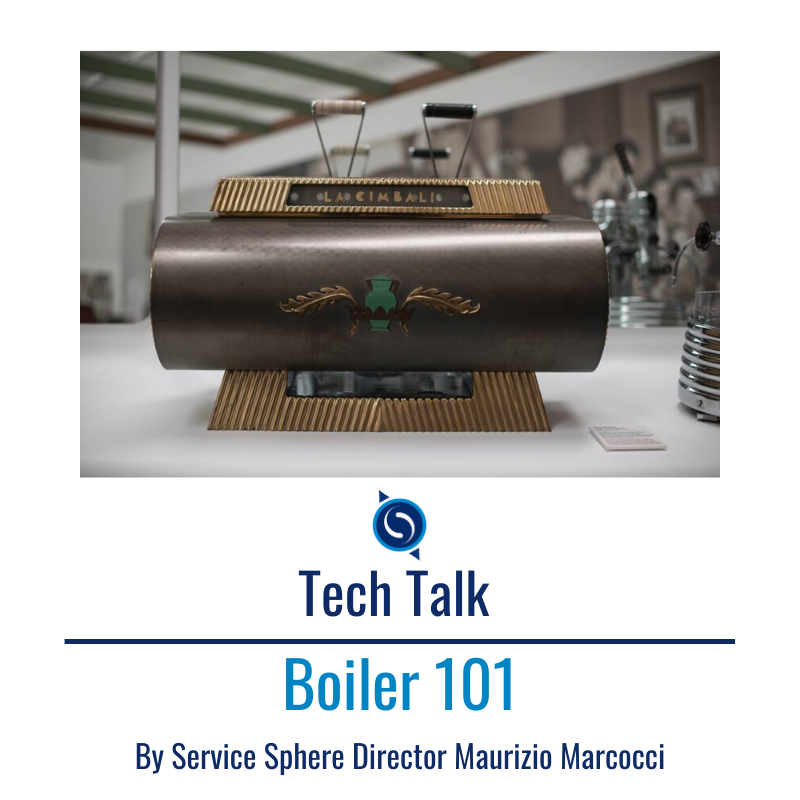An espresso machine is a complex piece of equipment, which only becomes more so as manufacturers add new features and technologies to improve coffee quality.
An obvious example is the boiler. The original espresso machines, or simpler modern models, use one boiler to heat and maintain water at a set temperature before it is pumped into the group head.
But from the 1960s and 1970s onwards, heat exchangers and twin and multi-boiler systems were introduced to allow espresso machines to heat water to the different levels needed for the steam wands or multiple group heads.
Over the years, other features have even been added to boilers to improve their performance and consistency. Some of these innovations include:
- Proportional integral derivative (PID) control: Continuously measuring and regulating the boiler temperature so that it stays exactly at what’s needed to make the perfect cup of coffee.
- Smart Boiler Technology: LaCimbali’s smart boiler technology manages the barista’s water usage and constantly injects mains water into the service boiler to suit, as opposed to waiting for large refills. This minimises recovery time and prevents sudden temperature drops during peak hours, while maintaining thermal stability.

While you might assume multiple boilers are better, it is not always the case. Single boilers still have their place and twin or multi boilers can come with drawbacks, so let’s look at the pros and cons of each system.
Single boiler
Many domestic and commercial coffee machines feature a single boiler where one boiler is used to heat water to the set temperature for brewing, as well as producing steam for steaming milk.
Pros
- A single boiler, such as the La Cimbali M27, features a simple design with fewer components than a twin or multi boiler machine, making servicing easily available
- Single boiler machines with PID control have the ability to adjust brew temperature independently of steam pressure
- Single boiler machines like the La Cimbali M34 are usually more affordable for those operating on a budget, while providing a solution which will cater to high volume environments.
Cons
- There is a higher chance of temperature fluctuations, especially when making multiple extractions and steaming milk all at once
- There’s also the inability to set brew temperature independent to steam pressure
- In general, single boiler machines have smaller boilers with less capacity than other models.
Twin and multi boiler
In twin boiler machines, cold water from the mains line connection is pumped into two boilers, usually one dedicated to the steam and hot water, and the other a dedicated coffee boiler to cater for all group heads. Water in the steam boiler is heated to provide the desired steam pressure. Water in the brew boiler is heated to the desired brew temperature. Usually, the temperature of each boiler can be independently adjusted.

Multi boilers operate in a similar way, with the exception of additional coffee boilers (one for each group head). This means if you have a two-group machine, you will have two coffee boilers and one steam boiler.
Pros
- Independent brew temperatures and steam pressure adjustments are available on the espresso machine
- There’s less effort required to get consistent brew temperature
- Usually these machines offer higher levels of electronic functionality such as pre-infusion, temperature, and pressure profiling adjustments
- On some multi boiler machines, such as the LaCimbali M100, there are more electronic components to eliminate breakdowns, such as pressure stats.
Cons
- Twin and multi boiler machines have more complex design with more components so less service providers in some areas
- They are more expensive than comparable single boiler machines.
While a twin or multi-boiler model will generally offer a more consistent coffee and ability to steam milk, there are cases where a single boiler better suits the situation.
This includes where the machine is being installed and when price is a consideration. When it comes to coffee, sometimes simple is better. It’s always best to consult the professionals when considering what type of coffee machine best suits your environment.
This article appears in the December 2019 edition of BeanScene.









